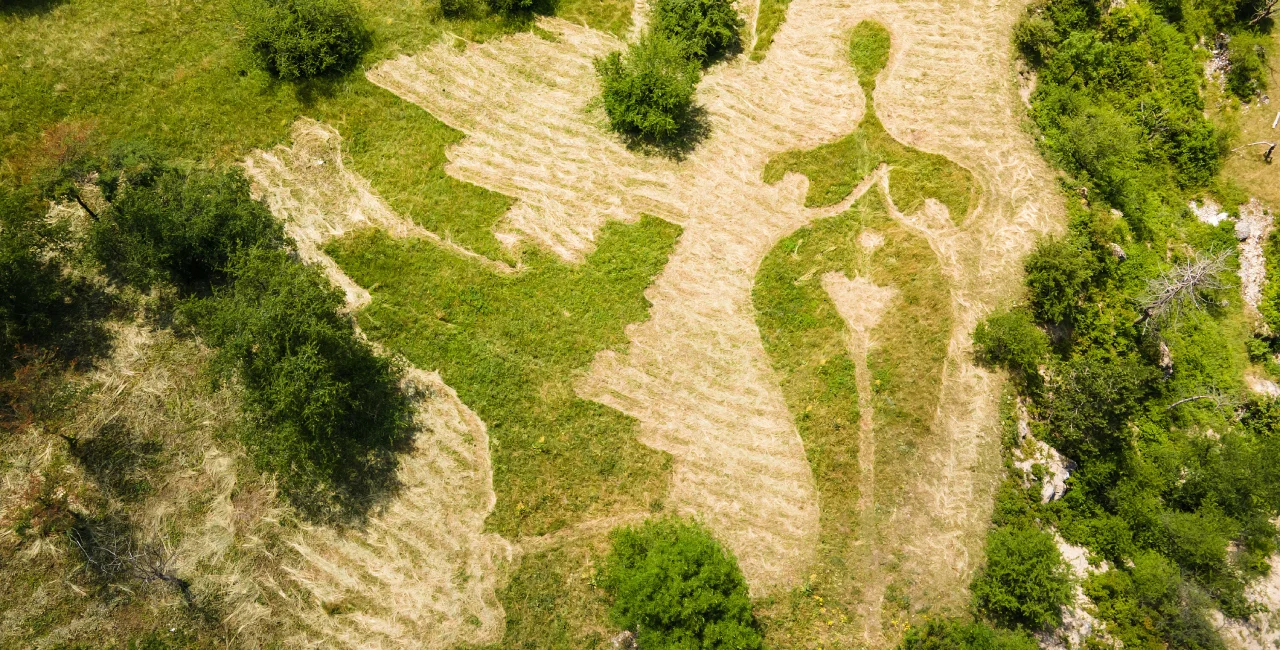A creative mower in South Moravia has created a depiction of the Venus of Dolní Věstonice, one of the oldest ceramic figures in the world, in a field in Pálava, South Moravia, near the location the figure was originally found.
Unlike other recent artwork mowed into Czech fields, including a giant Pac-Man that was cut into a rapeseed field in protest of Prime Minister Andrej Babiš, the Venus depiction was not the work of activists. Instead, it was a creative lawn mower having some fun during a contracted job.
The field, located in the Děvín National Nature Reserve of the UNESCO-recognized Pálava Protected Landscape Area (CHKO Pálava), was selected for what is known as mosaic mowing by the CHKO Pálava administration.
Mosaic mowing involves leaving a percentage of large fields that would otherwise be completely mowed intact in an effort to preserve a consistent habitat for local fauna and flora in the area.
CHKO Pálava hired an independent contractor to carry out the mosaic mowing, but did not specify which portions of the field to leave intact. They were surprised to find the creative solution the mower found, which is not visible from ground level but can be viewed from the sky as well as nearby hills.
"We have supply companies that receive orders for mosaic mowing across several hectares," said Jiří Kmet, head of the Pálava Protected Landscape Area administration.
"How it's done, it's up to them, this company was quite creative. We do not prescribe the shapes of uncut areas. When it is carried out in this way, it is also interesting for visitors.“
The depiction of the Venus of Dolní Věstonice in the field should be visible until the end of summer.
The original ceramic artifact was discovered at the Dolní Věstonice archaeological site by the base of Děvín Mountain in the same nature preserve. Dating back to around 29,000 – 25,000 B.C., it and other figures found nearby are the oldest ceramic artifacts in the world.
While the Venus of Dolní Věstonice was originally on display at Moravian Museum in Brno after being discovered in 1925, it has since been placed in a protected area and is now only rarely presented to the public.
One of the last times it was widely viewed was as part of an exhibition called The Mammoth Hunters at the National Museum in Prague from 2006-2007.












 Reading time: 2 minutes
Reading time: 2 minutes 























